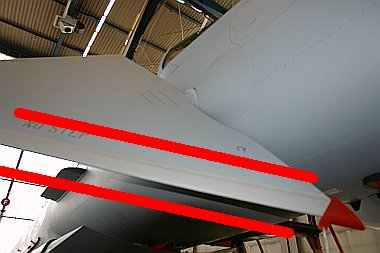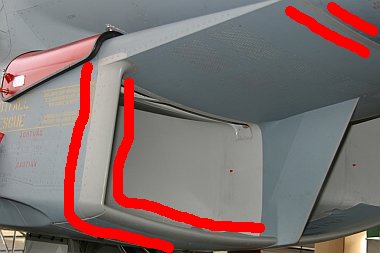Logan wrote:And presumably you do know about the unreleased details of the MKI?
I wouldnt say they are unreleased...in total. But yes, theres a lot about the MKI that can be & should be discussed a decade from now, when the MLU comes in..or when the MRCAs arrive. If ever, that is.

No you cannot fire a R27 at those ranges. No pilot in their right mind would fire a missile at that range. Not only will NEZ envelope be out of reach but the missile would pretty much be useless esp. considering the much draggy airframe older R27s have. Any "serious" BVR engagement only takes place between 18-35km regardless of what missiles you are carrying. It doesn’t do any good to fire them at 80km and then miss.
You are mistaken here. Again, there is a good reason why the R-27 is being retained in the IAF inventory and will be for some time.
Austin wrote:So you think that RAF has released all the details on Typhoon for all to see
Actually - wrt many key parameters, yes! They have been very very public with the access to the bird about many key operational capabilities. Not the RAF per se, but the EADS combine. Partly to counter public criticism of the program & partly because of the participating nations strong democratic credentials, and most importantly, because they have been very concerned with export sales.
If you actually look at the open reports, its fairly possible to build up a good capability overview of the EF. Of course, I am not getting my hands on operational frequencies, beam widths of the captor etc etc - but the rest, many people worldwide have a good idea. And by the end of this exercise, so will the IAF. I have kept pointing you to some data sources, with good reason!
See my answer to RCS is simple , No doubt if they can achieve a RCS of 3 m sq for plain vanila MKI its a wonder full achievement , But there is no denying the fact that the MKI basic design comes from early 80's where RCS was of little or no consideration in designers mind , so by design MKI dosent have low RCS but that RAM thing and some other coating makes it possible.
The Typhoon design is of 90's vintage and RCS reduction was taken into account while designing it , not as extensive as an F-22 but many basic stuff goes into it , That equally well applies for Rafale , Now if they can do some comprehensive RCS reduction on plain vanila Typhoon using RAM/Coating etc as Russians have done for MKI then you can well imagine that it can achieve far better results.
You are thoroughly mixing up things here! The EF design, and to a fair extent the Rafales too, come from the 80's not the 90s! The EF program was born way back, but the design aims of the program need to be kept in mind, as do the Rafales. There is little doubt that the EF was more of a classic air superiority fighter with RCS reduction being in the form of band aids that were added to the original design in order to reduce the RCS, but a combination of long range radar, and superb aerodynamic performance was deemed the critical factor. In contrast, the Rafale designers chose the discrete option. This included a low signature, a radar with LPI characteristics (and that is also the reason why the range of the RBE-2 is RDY equivalent) & they also invested a lot in optronic development and even the Mica-IR program. As things would have it, market pressure is now forcing both design teams to stress upon aspects of their airframes, the original designers didnt consider as "that important".
Coming to the Su-27/30-MKI, the airframe treatment prescribed by the Russians is pretty much the same in theme and content, with what has been implemented on the EF. The EF team has gone a different way when it comes to the fan blades however, and the Russians state that their method is also workable.
I have been following the EF program for ages, and in fact even before the MKI, ditto for the Rafale- shoot, I even have detailed reports on the EAP lying around somewhere. This entire reduced RCS - EF hosanna is of the recent times, thanks to the JSF marketing campaign. And even that bird...wonder what its actual RCS will be, for grade-3 (grade-1 US, grade-2 UK/RAAF) customers..
But the reality is that unless you go below the 0.1 mtr threshold (and that aint gonna happen with EF's/ Rafales/ MKIs festooned with munitions), in fact a tenth of that..you arent going to get any discernible performance advantages in terms of detection when both sides have high powered AWACs. And that is exactly why the US went for stealth...quickly deciding (with good reason!), that airframe performance could be traded down, but true detectability reduction..with internal carriage is the way to go. Uncle Sam has led the way, as usual! Wonder when the rest of the world will catch up.
Coming to aerodynamics & propulsion & supercruise and all that...heres the funny thing...compare the released data by the EF consortium...and you'll see that that while SC gives the EF good performance vis a vis teen series fighters..the Flanker carries enough fuel to call it a draw in most critical (especially air to air) parameters.
In fact, given the size & hauling capacity of the Flanker, the IAF made an excellent choice by going for it! And unlike the PRC Su-27SK clones, ours are beefed up internally by design (a process which we are involved in), making this aircrafts innards more accessible & transparent to us. And when I state this- I am looking towards the Russian approach of KISS! A powerful radar & LRAAMs- thats the Flankers forte. And any non pure stealth fighter bar the F-22, will
not find this bird a walkover.











